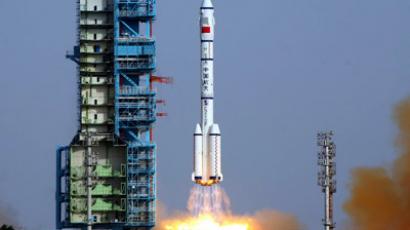China becomes third country to land on moon
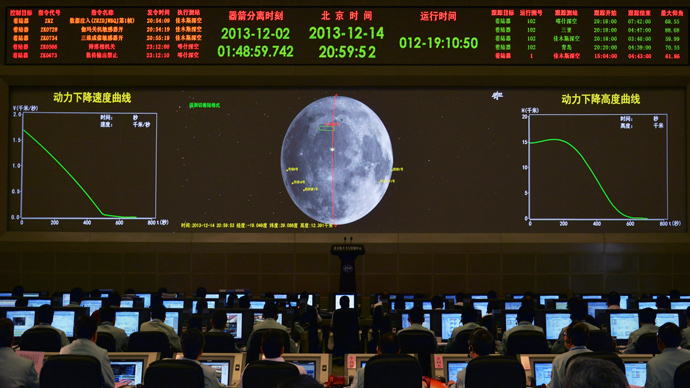
China landed an unmanned spacecraft on the moon on Saturday, according to state media. The event marks the first soft-landing on the moon in three decades, joining the USA and former USSR in achieving the feat.
China’s official Xinhua news agency reported that the spacecraft touched down in the Sinus Iridum, known as the Bay of Rainbows, at 9:11 p.m. after hovering over the moon’s surface for an unspecified few minutes, scouting out a suitable place to land. The subsequent soft-landing did not damage the craft, unlike a previous mission in 2007 when China sent a lunar probe to conduct a controlled crash into the moon’s surface.
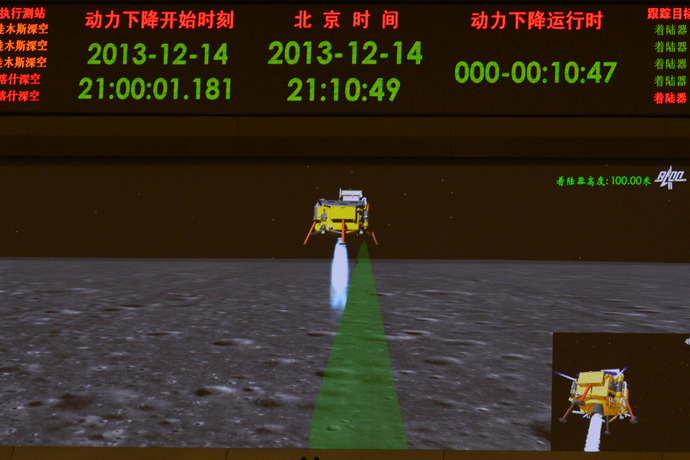
A telescope is on board the landing craft, known as the Chang'e-3 probe, which will likely stay in place and operate for a year. The telescope is designed to survey space from the moon’s surface. The landing craft also houses an ultraviolet camera which will study the Earth and its plasmasphere.
A solar-powered rover, known as Yutu, is also on board. It will traverse the area for three months, analyzing topsoil and collecting information on the moon at a depth of 100 yards.
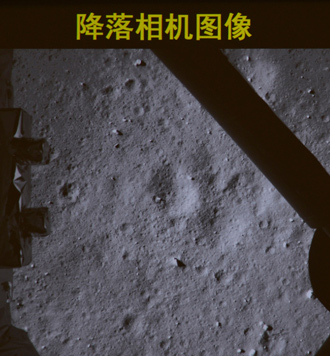
The Bay of Rainbows has yet to be studied, but Xinhua stated that
it was chosen because of its ample sunlight and convenience for
long-distance communications.
The Chang'e-3 probe was launched on December 2. It carried the
solar-powered Yutu, which will dig and survey both the moon’s
geological structure and surface substances, as well as look for
natural resources.
China Central Television (CCTV) broadcast images from the probe on Saturday and announced that the lunar probe and the rover will snap photographs of one another on Sunday.
This is the first time that China has sent a spacecraft to the surface of an extraterrestrial body, and the first time one has landed on such a surface since 1976.
“It's still a significant technological challenge to land on
another world,” Peter Bond, consultant editor for Jane's Space
Systems and Industry, told AP. “Especially somewhere like the
moon, which doesn't have an atmosphere so you can't use
parachutes or anything like that. You have to use rocket motors
for the descent and you have to make sure you go down at the
right angle and the right rate of descent and you don't end up in
a crater on top of a large rock.”
The probe comes after Chang'e-1’s lunar orbit mission in 2007 and
Chang'e-2 ‘s mission in 2010. Both missions helped prepare for
Monday’s launch. The crafts are named after Chang’e, goddess of
the moon.
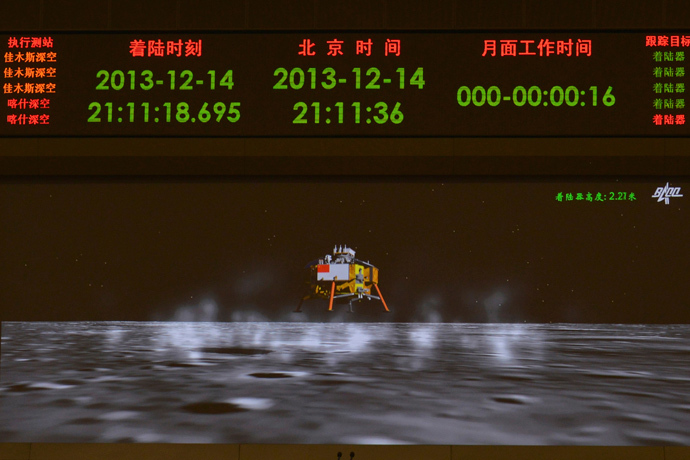
Chang'e-1 made a complete picture of the moon – China’s first – by orbiting for 494 days and then intentionally crashing onto the lunar surface. Chang'e-2’s mission tested new technologies being used in the current lunar exploration and researched the landing area.
China plans to launch another lunar probe in 2017, with the intention to land the probe on the moon, release the rover, and return the probe back to Earth. Beijing also has plans to build a working space station by 2020.
China sees its space program as a symbol of national pride, rising global influence, and growing technical expertise.
Beijing began its manned space program in 1992. In 2003, China successfully sent Yang Liwei, the country's first taikonaut, into orbit aboard the Shenzhou-5 spacecraft.













